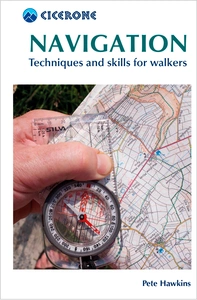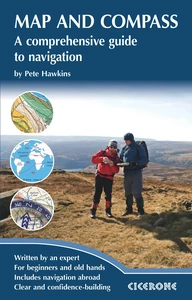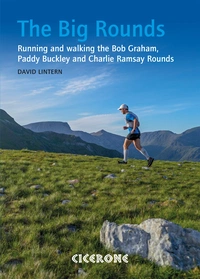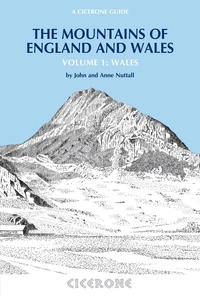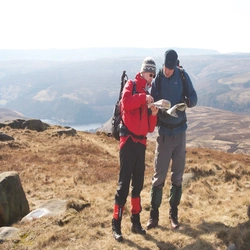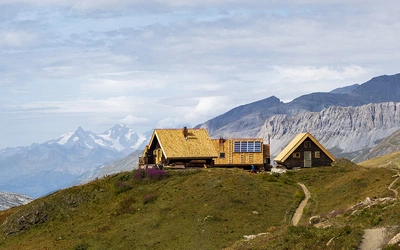Skills sessions – using a map
Cicerone author and navigation expert Pete Hawkins shares his knowledge and experience on how to successfully and safely navigate at home and abroad. It goes without saying, doesn’t it, that whenever you go out for a walk, ride or run, you take a map with you. Doesn’t it? Well, it should. Here, he explains how to use a map.
Navigation
Techniques and skills for walkers
£9.95
This pocket handbook to navigation will help you master the necessary map and compass skills for mountain walking. Chapters include map scales, symbols and contours, grid references, map reading, bearings, route planning and night and bad-weather navigation, as well as navigating with a GPS.
More informationI’m dreaming here, but what if there is something out there that means we never ever get lost on a walk again. It would be simple to use, require no batteries yet contains an enormous amount of useful and accurate data that we could employ to our benefit in an instant. If only…
Hang on, there is. It may only have a three-letter name, but its simple title belies the incredible details it contains within it – a map. Yippee!
In the UK we are blessed with the best mapping resources on the planet and I’m not just talking about the Ordnance Survey. We also have the likes of Harvey Maps who produce superb maps for the outdoor market at either 1:25,000 or 1:40,000 scale. OS maps cover the whole country in their leisure orientated 1:25,000 or 1:50,000 scales, whereas Harvey produce them for popular walking areas as well as many long-distance trails and routes. In short, there is no excuse not to take a map out with you, the OS and Harvey have you covered!
I recommend using both regularly if you can. The OS maps are designed to be used by as wide a market of people as possible; Harvey are very much geared to outdoor activities and show, in their iconic colour system, different land uses, which can be a very useful adjunct to your navigation.
But carrying a map isn’t enough; it’s important to use it. If it’s in hand throughout your walk you can regularly refer to it, keeping an eye on where you are and what you can expect from the next section of your journey. A map kept inside your rucksack all day is neither use nor ornament.
Set your map
If you use a sat-nav in your car the chances are that it will orientate itself to reflect the direction in which you’re travelling. So, if you’re heading south, then the top of the map will be south. A paper map can’t do this automatically, of course, but orientating your map to the direction you’re facing ensures that when the map says the path you need to take is on the right, it’ll be on the right on the ground. To orientate your map, find a linear feature, like a wall or track, and turn the map so that the run of the feature is the same on both ground and map. Whenever you pause on a walk to look at the map again, make sure you re-orientate it. It’s a simple habit to develop and one that will ensure you cut down significantly on your navigational errors.
Telling a story
I always liken a walk to a story, broken down into bite-size chunks. When you’re planning a walk, look at the map and divide it into sections (this will form the basis of your route card (see my book Navigationfor details). When you arrive at the start of a section, look at the map carefully and spot features you can identify along the way. As you walk the route, mentally tick them off as you go along. Something along the lines of the following.
‘As I leave the village, cross a small field, past a building to my right, and then a gentle downslope across a bigger field for a couple of hundred metres, the end of which is bordered by a stream, flowing from my left to right. The path then climbs gently and follows a wall to a wall junction. The next section of path has the wall to the left which we follow through three fields before we reach collection of farm buildings (Ashes farm). Passing through the middle of the farm buildings we cross another field and reach a road crossing from left to right in front of me.’
A simple story line that, as it runs through your head, will be enough to ensure you have gone in the right direction and ensures you don’t overshoot at the end. The more you employ this technique, the longer you can make the section as your navigational skills improve and your map memory improves.
Study the symbols
I have assumed that you are familiar with the symbols on the maps you use, after all we’ve all been to school and suffered innumerable tests in geography. If you don’t then it’s time to redress that lack of knowledge. Take out a map for a walk you know like the back of your hand. Rather than just walk the route, map read round it. When you come to a feature on the ground, look at how it’s represented (if it is) on the map. The more you do this the more familiar you’ll become with the map symbols before you do the same in an area you don’t know quite so well. If you get stuck with a symbol, don’t forget to use the map’s key.
And finally, let’s consider briefly the growth in digital mapping source, like the OS’s own OS Maps app or dedicated GPS units like the Sat-map. Here on the screen of your smartphone or GPS you can enjoy digital maps at a variety of scales. Why do we need paper? Well, maps require no battery and are less susceptible to the wet are two reasons. You can’t rely on there being a phone signal and despite the growth in size and quality of device screens, they limit your view and something of use may be just off screen. Getting a wider view is much easier on a map. That’s not to say devices don’t have their role in the outdoors; I use them myself, but nothing beats having, and using, a good old paper map.
To complement my two Cicerone books on navigation, The National Navigation Award Scheme offers practical courses up and down the country. Visit NNAS to see a list of the courses and let them teach you to Navigate with Confidence.
Added note: You don't always need phone signal to use mapping software as some apps allow you to download the mapping before you go out. However, you are still at the mercy of your battery so take precautions - and a paper map!


